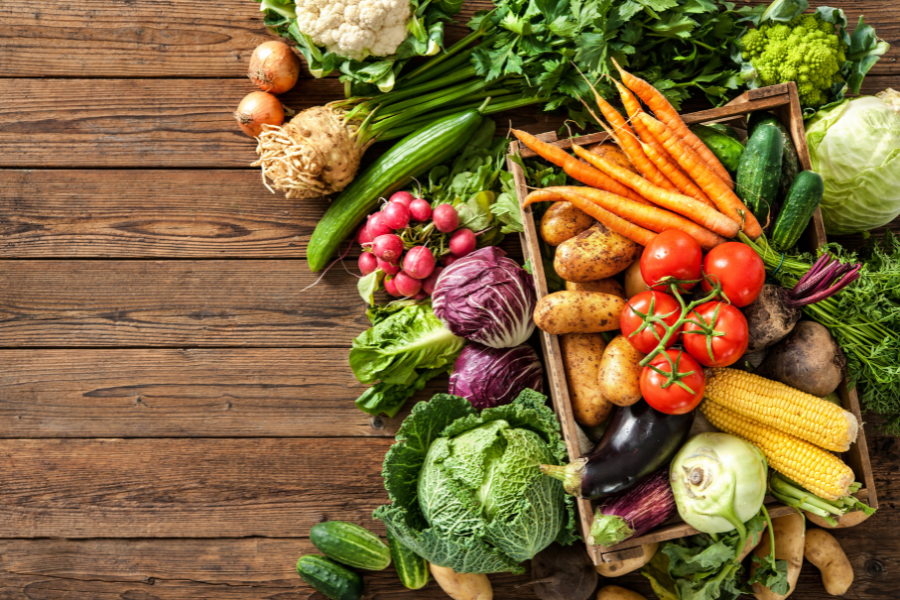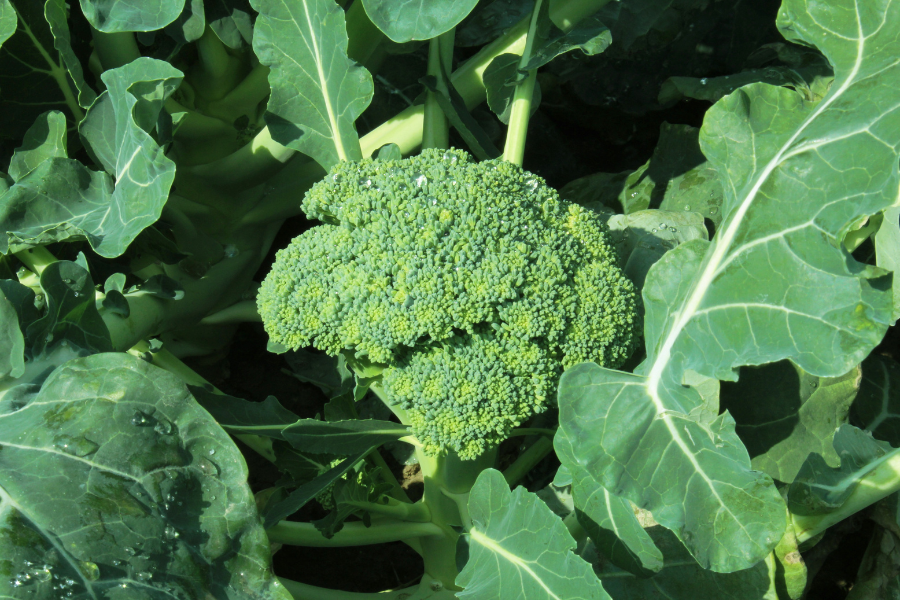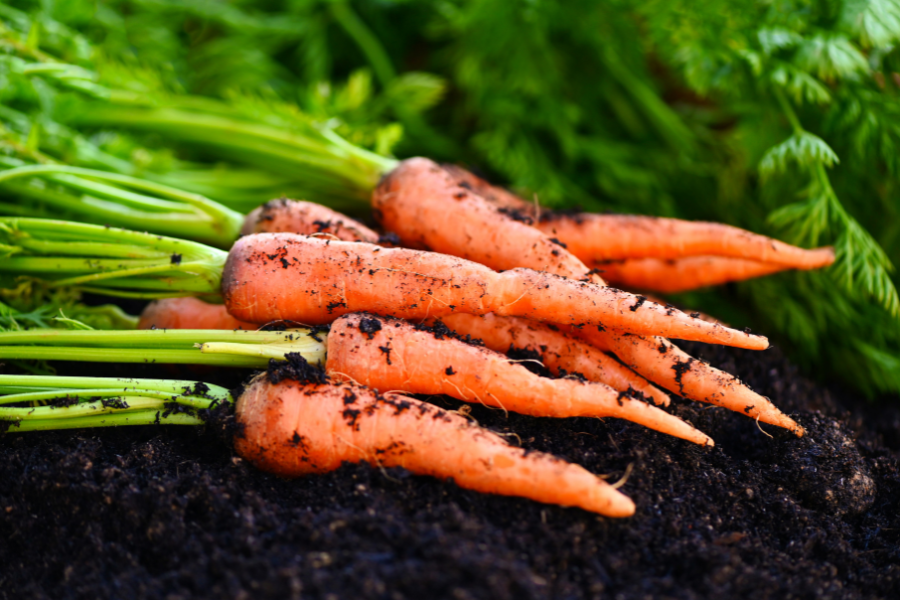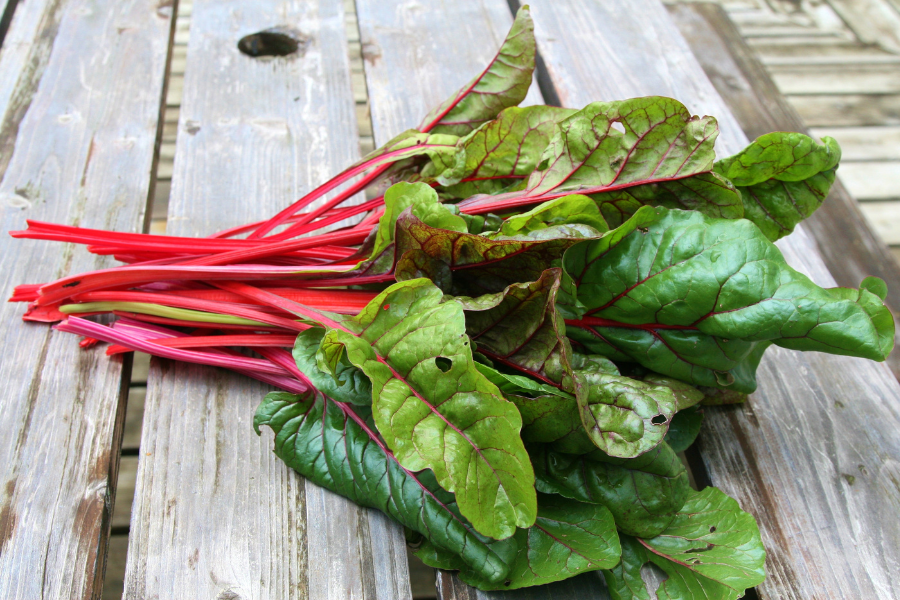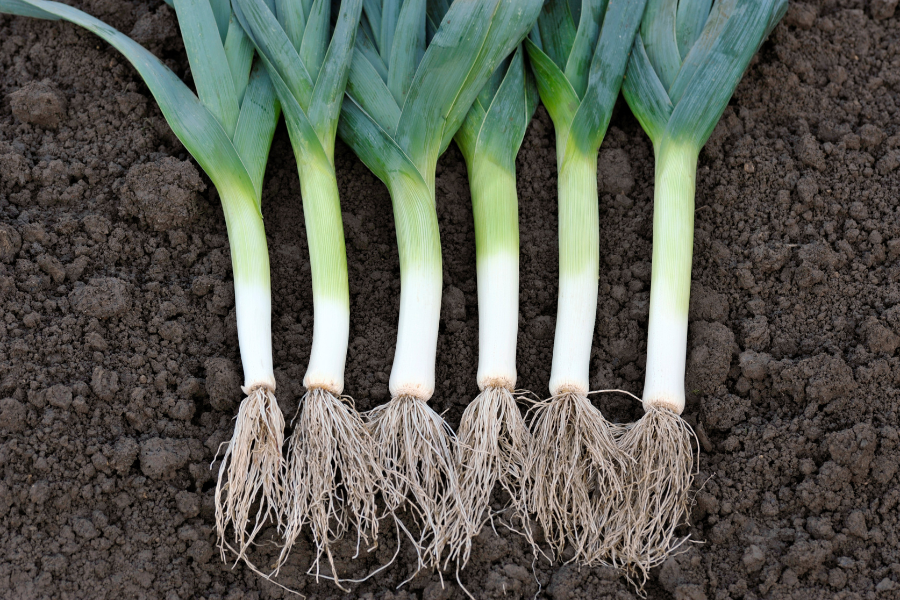We use cookies to make your experience better. To comply with the new e-Privacy directive, we need to ask for your consent to set the cookies. Learn more.
8 Best Vegetables to Grow in September
- Admin
- WM James Gardening Blog
- 19 Apr 2024
-
22views

You might think that September is a bit late in the year to begin planting crops in the UK, but that couldn't be further from the truth!
Plenty of plants are perfect for planting at this time of year to yield crops through the winter or to get a head start on your spring crops next year.
Whether you're a seasoned gardener looking for inspiration for your vegetable patch or you want to take your first steps into the world of home-grown vegetables, we've compiled a list of the top 8 vegetables to grow in September.
|
In this guide, we'll look at:
|
The Essential Veg Growing Calendar for UK Gardeners
8 Easiest Vegetables to Grow in September
September is far from too late to indulge your green fingers. Take advantage of the balmy late summer sun to get a jump on winter and early spring crops with these 8 easy-to-grow vegetables.
| Vegetables to Grow in September | When to Harvest |
|---|---|
| Spinach | 6-10 weeks after sowing |
| Overwintering Onions | Early to mid-summer |
| Broccoli | When the head is deep green & stops growing |
| Carrots | 60-80 days after sowing |
| Garlic | When the leaves turn yellow |
| Brussels Sprouts | When heads are 1-2 inches in diameter. (sprouts are sweeter after frosting) |
| Swiss Chard | 10-12 weeks after sowing |
| Leeks | 4-5 months after sowing |
1. Spinach
Planting spinach in September in the UK can lead to a fruitful harvest thanks to cooler temperatures.
To achieve this, choose a partially to fully sunlit location with well-draining soil and enrich it with organic compost. Sow seeds thinly at a depth of 1.5cm and rows 30cm apart, watering them gently. Our Wooden Seed & Plant Spacing Ruler is a great planting tool to help you get the spacing right to ensure the best chance of success.
Seeds germinate in 7-14 days; keep the soil moist. Once they're 3 cm tall, thin seedlings to 7-15 cm apart for optimal growth.
For continuous harvest, plant seeds every two weeks in September and use fleece to protect them as temperatures drop, ensuring a steady supply of spinach.
2. Overwintering Onions
Overwintering onions should be planted in September to establish their roots in the cooler yet still-warm soil, which encourages strong growth before the winter.
Choose a sunny site with well-drained, fertile soil enriched with organic matter. Plant the onion sets (small bulbs) 10cm apart in rows that are 30cm apart, ensuring the tip is just showing above the soil.
This timing allows the onions to develop a robust root system and some foliage before the first frosts, giving them a head start over spring-planted sets. This early planting results in earlier harvests next year, usually by late spring to early summer, providing fresh onions at a time when they are most welcome in the kitchen.
To protect them over winter, consider a light mulch to insulate against severe cold snaps. Horticultural fleece is also a great option for keeping the sets warm.
Our Horticultural Garden Fleece is very effective at keeping plants warm and protected during the colder months, and you can purchase it by the metre, allowing you to get no less or more than exactly what you need.
3. Broccoli
Planting broccoli in September is ideal for a few reasons. Firstly, the cooler early autumn weather stimulates growth and reduces the risk of premature seeding, which is common in warmer conditions.
This timing allows for a harvest in late autumn to early winter or even early spring if the winter is mild.
For success, pick a sunny spot with fertile, well-drained soil. Enhance the soil with plenty of compost or well-rotted manure before planting. Sow seeds 1cm deep and 30cm apart directly in the ground, or transplant seedlings, maintaining the same spacing.
Water the seeds or seedlings well after planting and keep the soil consistently moist.
Also, we recommend protecting young plants from pests like caterpillars with vegetable netting or fleece. Our Fine Insect Mesh Netting is is a great versatile plant protection net, keeping even the smallest of insects out.
4. Carrots
Planting carrots in September in the UK allows them to utilise the still-warm soil for quick germination, while cooler, wetter weather as the season progresses helps them grow without the stress of summer heat.
Choose a sunny spot with sandy, well-drained soil. Sow seeds directly into the ground, lightly covering them with soil. Thin seedlings to 5cm apart to avoid crowding.
This timing ensures a late autumn or winter harvest, providing fresh and sweet carrots during colder months when other vegetables may be scarce.
5. Garlic
Planting garlic in September offers several advantages for your garden. This timing allows the cloves to establish roots before the winter, leading to stronger and more vigorous plants come spring.
Choose a well-drained, sunny spot and plant the cloves (pointy end up) 2.5cm deep and 15 cm apart in rows. The cooler autumn weather reduces the risk of cloves rotting in the soil.
Garlic planted in fall typically matures faster and produces larger bulbs than those planted in spring, ensuring a bountiful harvest by early summer.
|
Top tip: To enhance growth, incorporate a generous amount of organic matter into the soil before planting. |
6. Brussels Sprouts
Planting Brussels sprouts in September is ideal for yielding a harvest in the late autumn or, if protected, even through the winter months.
These robust plants thrive in cooler temperatures, which enhance their flavour. For the best results, select a site that receives plenty of sunlight and has rich, well-drained soil.
Prior to planting, enrich the soil with a balanced fertiliser to encourage strong growth. Plant seedlings about 60cm apart to provide ample room for growth, as Brussels sprouts can become quite large.
Water the seedlings thoroughly after planting and throughout their growth period. A layer of mulch can help retain soil moisture and regulate temperature.
7. Swiss Chard
Planting Swiss Chard in September is advantageous for those seeking a hearty and vibrant addition to their autumn and winter garden.
This resilient leafy green thrives in the cooler months. September planting allows for an extended harvest period through late autumn and even into winter in milder climates.
Choose a sunny or lightly shaded spot with well-draining, fertile soil enriched with compost or well-rotted manure. Sow seeds directly into the ground, 1 cm deep and 30 cm apart, to give each plant ample room to grow.
Swiss Chard is not only aesthetically pleasing with its brightly coloured stems but also highly nutritious, making it a valuable and versatile crop for your garden as the seasons change.
8. Leeks
Planting leeks in September is highly beneficial as it aligns perfectly with their growth cycle for a harvest in late spring to early summer.
The cooler temperatures in autumn encourage strong root development without the leeks bolting, which can happen in warmer weather. Choose a well-lit area with fertile, well-drained soil, enriching it with compost or well-rotted manure beforehand.
Plant the leek seedlings deeply in holes about 15cm deep, trimming the tops and roots to encourage growth. This depth helps to blanch the leek stems, ensuring they are tender and white.
Water the seedlings thoroughly after planting and during dry spells to ensure steady growth.
Leeks planted in September have the advantage of experiencing less competition from pests and can be left in the ground until needed, offering fresh produce throughout winter and spring.
Our Top Tips for Late Summer Planting Success
Although September is often still warm enough for your plants to get a good start, there are a few things you can do to ensure success when it comes time to harvest.
Water Well During Dry Spells
Despite September marking the transition from summer to autumn, the month can still experience dry spells with scarce rainfall.
It's vital to water your plants well during these periods, as adequate moisture is crucial for their development and survival. Plants rely on water not just for hydration but also for nutrient uptake from the soil.
Without sufficient water, plants can't absorb the essential nutrients they need, leading to stunted growth, weakened defences against pests and diseases, and, ultimately, reduced yields.
Also, for vegetables to establish their roots and adjust to their planting environment, consistent moisture is key to promoting strong, healthy growth.
Protect Young Plants with Fleece
Garden fleece protects young plants from sudden temperature drops and early frosts during the chillier days of September. Frost damage can cause wilting, discolouration and even death in delicate seedlings.
Additionally, fleece can deter pests, safeguarding tender vegetation during crucial early growth stages.
By allowing light and moisture to reach the plants while offering protection, garden fleece ensures that your autumn plantings thrive, setting a solid foundation for a successful growing season.
At WM James & Co, we stock a range of garden fleece to keep your vegetable garden warm during cold snaps as the weather transitions, especially towards the end of the month.
Our Horticultural Garden Fleece is sold per metre, allowing you to cover custom areas or protect a range of plants with one large sheet.
Our Plant Frost Protector Jackets made from 35sgm fleece are perfect for separately potted plants, providing individual protection without the need for large sheets of fleece. The Small Plant Frost Protector Jackets are ideal for small potted vegetables, whereas the Large Plant Frost Protector Jackets are ideal for larger plants and even young fruit trees.
Keep On Top of Garden Weeding
Weeds compete with your vegetables and flowers for essential resources like sunlight, water, and nutrients, significantly hindering your plants' growth.
Regular weeding eliminates this competition, ensuring your vegetables have access to the resources they need to thrive.
A weed-free garden also prevents pests and diseases from spreading to vegetables, promoting a healthier and more productive garden environment.
Invest in a Vegetable Cage
One of the best forms of protection for your vegetables is to invest in a vegetable cage. These structures are designed to keep pests and animals out while also providing a dedicated growing space for your vegetables.
You can opt for a low cage if you’re growing smaller plants like lettuce and peppers or opt for a taller cage if you’re growing bigger crops like tomatoes and beans.
At WM James & Co, we’ve been manufacturing and supplying the best fruit and veg cages for over 60 years, and our customers have seen great success with them.
Our cages are made from durable materials, with either galvanised steel or premium aluminium, and are made to your requested size, ensuring the perfect fit for your garden. We highly recommend using a vegetable cage if you want to see an increase in your harvest yield!
Summary: Successfully Growing Vegetables in September
Growing vegetables in September is a rewarding endeavour that sets the stage for a bountiful harvest through the cooler months and into the next year.
By choosing the right crops and following our top tips, gardeners can extend their growing season, enjoy fresh produce longer, and maximise their garden's yield.
Check out the rest of our Gardener's Diary blog for more insights and tips on making the most of your garden each month!
FAQs
What Vegetable is Best to Plant in September?
Among the vegetables that thrive when planted in September, garlic stands out. Planting garlic this month ensures strong root development ahead of the winter, fostering vigorous plant growth come spring. It matures faster, produces larger bulbs than spring-planted cloves, and rewards you with bountiful harvests by early summer.
Is September Weather Good for Growing Vegetables?
September's mild weather is ideal for growing vegetables. It presents an opportunity for many plants to establish themselves before the winter, benefiting from cooler temperatures and reduced pest activity. This will ultimately lead to substantial growth and yields in the following season.
Can I Plant Potatoes in September in the UK?
Planting potatoes in September in the UK is generally not recommended as they require a longer growing season free from frost. For a successful crop, consider planting early, mid-season, or maincrop varieties in spring instead.
Is it Easy to Grow Vegetables in September?
Growing vegetables in September can be considerably easy, especially with the selection of the right varieties. The month's mild temperatures are conducive to root establishment and reduced pest activity, making it an opportune time to sow certain crops for a robust yield in the forthcoming seasons.

